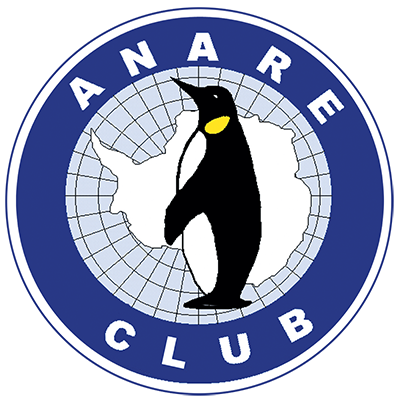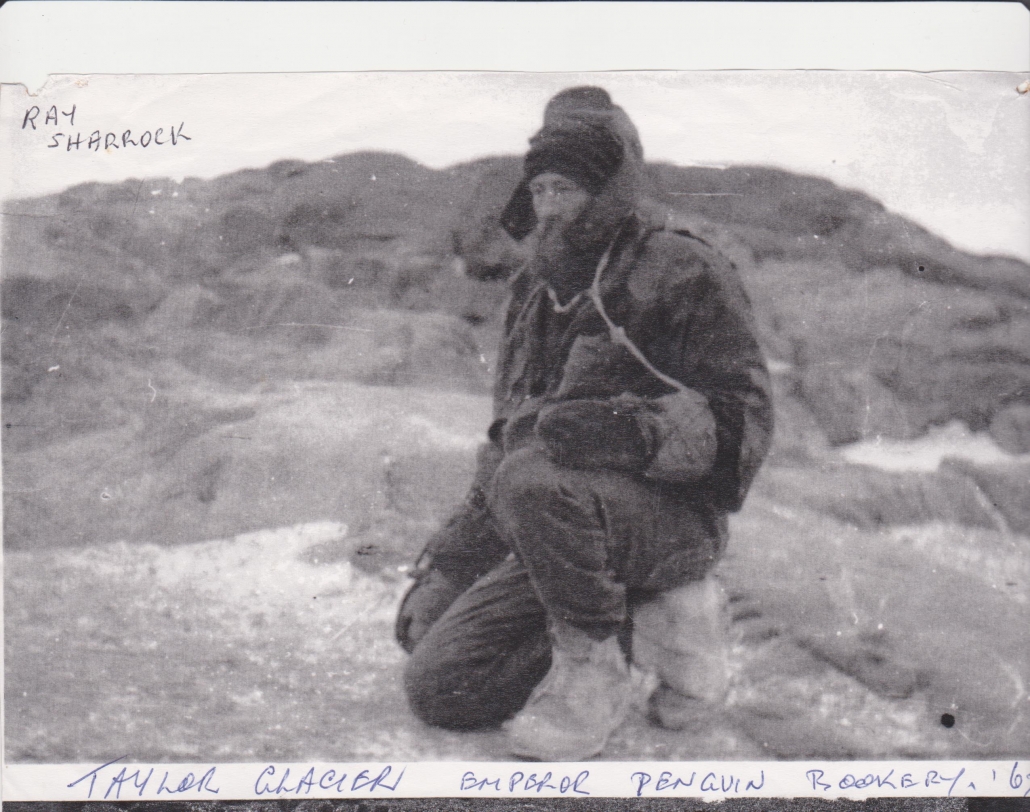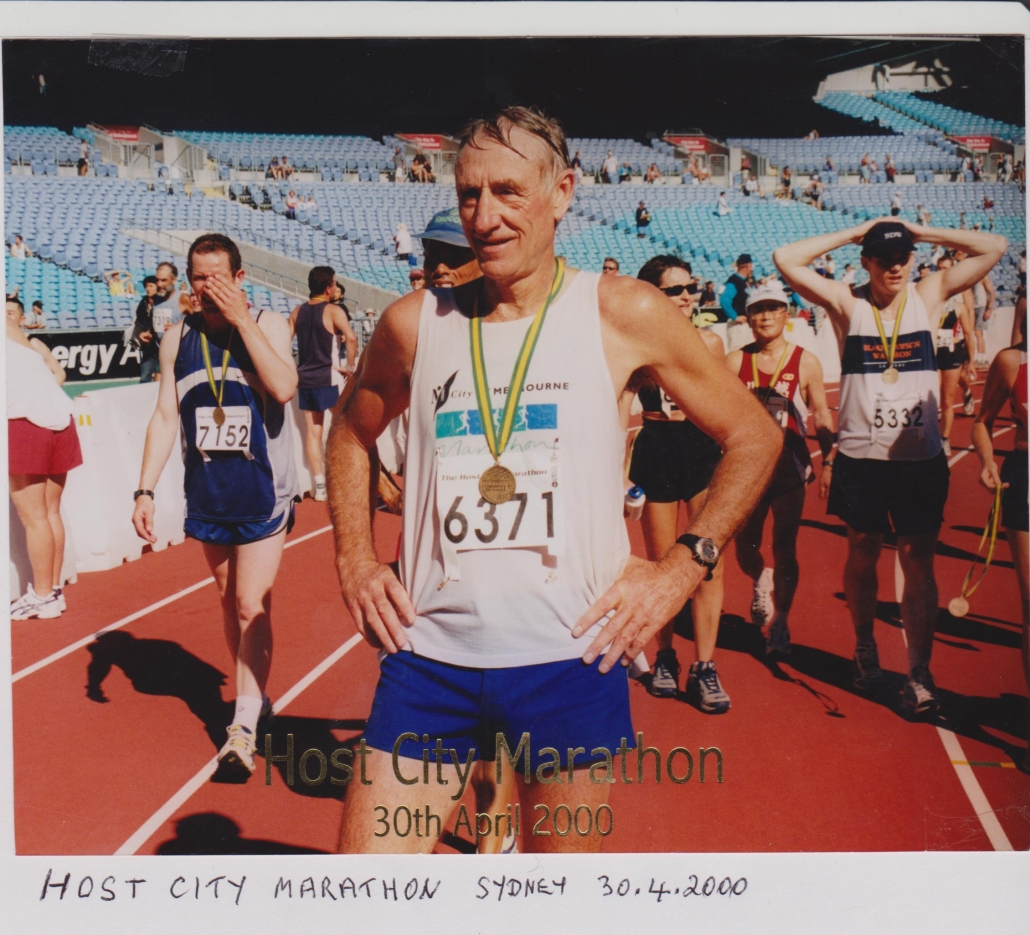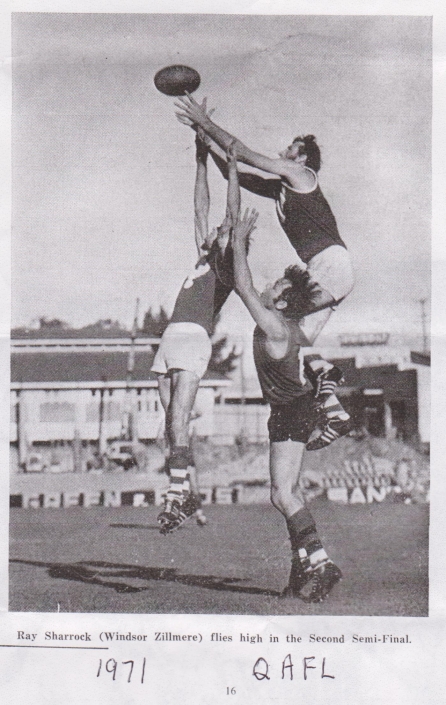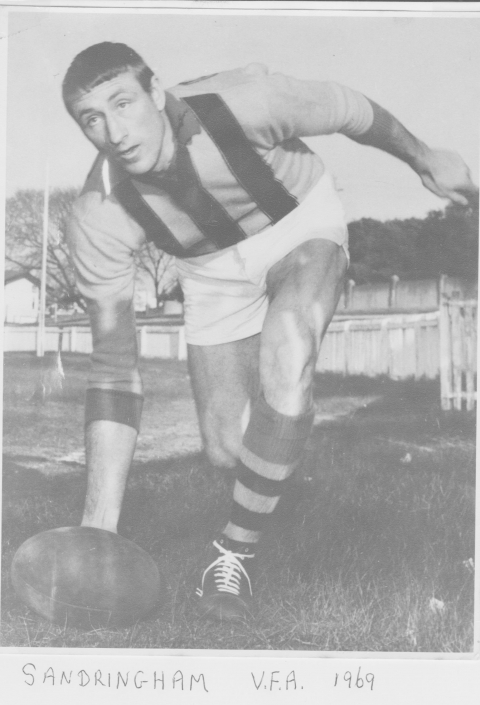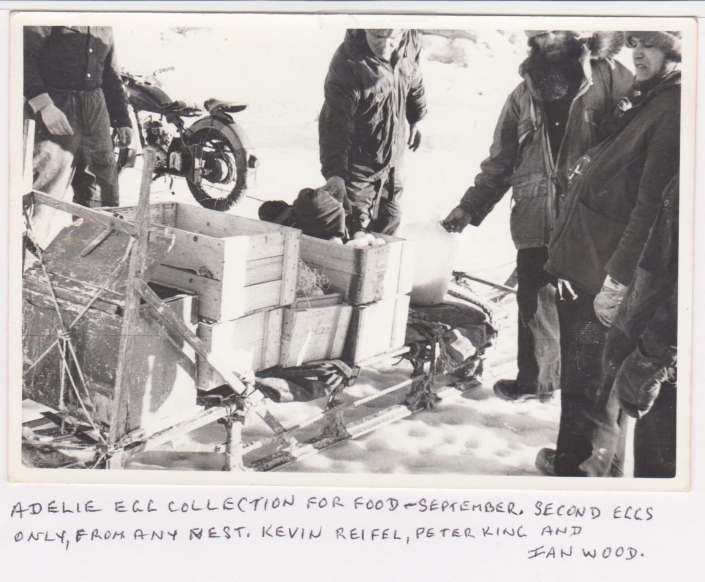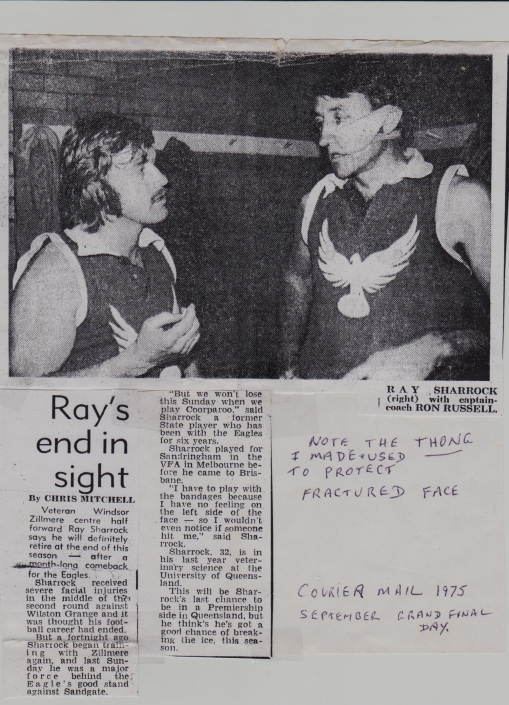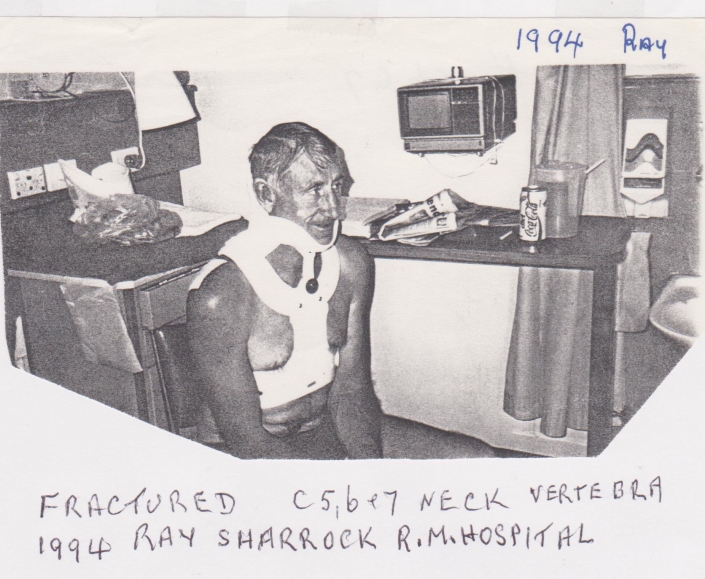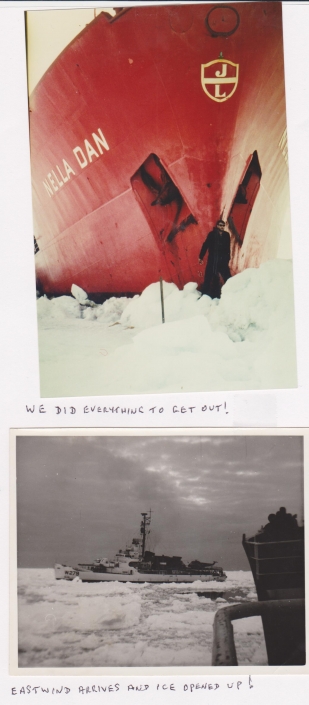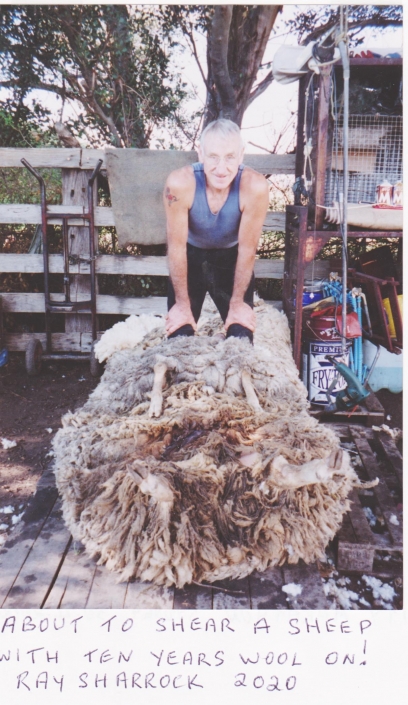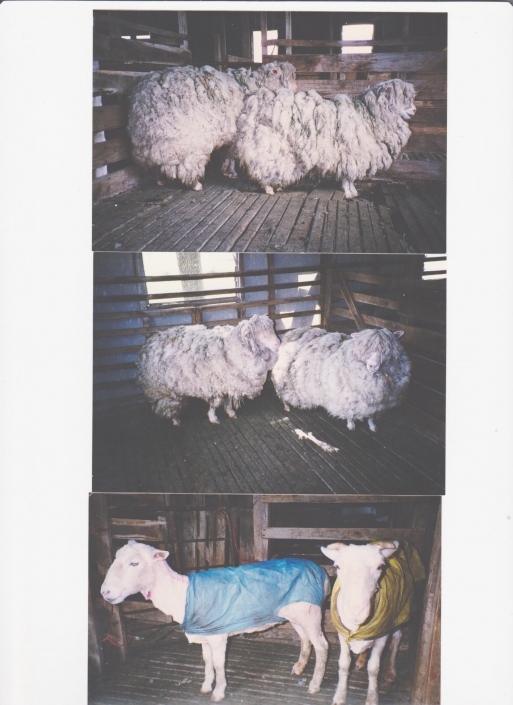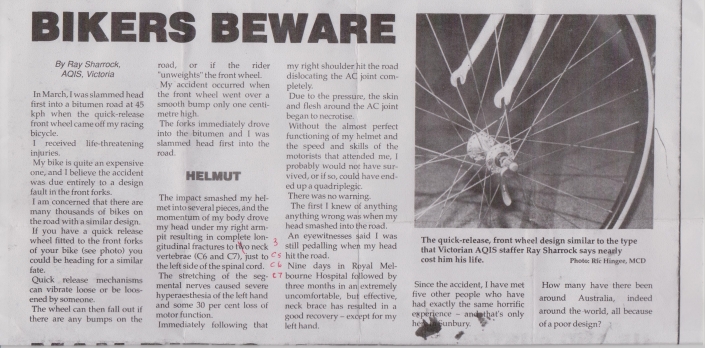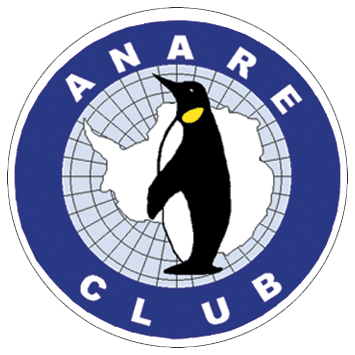MY OVERVIEW OF MAWSON ‘67
A journey with Ray Sharrock, Mawson ’67
We left Melbourne in late December 1966 on board the Nella Dan bound for Mawson via Repstat. One day out we encountered a serious storm as we were off the North West Cape of Tasmania which necessitated heading into it for 4 days and nights. Sleep was impossible during that time due to being tossed around so jerkily if you lay down. After the fourth night we were just off Kangaroo Island and were able to recommence our voyage to Mawson.
A week passed of un-interrupted ocean until we came out on deck from watching a movie late at night but broad daylight to find ourselves in this panorama of ice bergs in every direction. Many of them close together and we were passing between them as close as 100 meters. The spectacle of shapes and colours was spectacular. That’s when it became real that we were bound for the Antarctic.
A few days later we came into open pack ice that was reported to be 100 km’s or more wide. Within an hour or so progress was slow and then became to and fro to find leads and within another hour or so of riding up and breaking thru the ice we came to a dead calm stop with not a sound.
As the pack ice pressed in, we experienced the Nella popping up like a cork out of a bottle and there we were. The Captain announced we were beset and for us to stay calm and stay on board.
Within a few hours there were those that found the temptation too great to ignore and went over the side and down onto the pack ice. Very soon most were out on the pack ice and the Captain saw the adventure we were having. Very soon someone produced a football and it was game on. It was good for all levels of fitness and skills as every few yards of running, a leg would break thru the pack ice and down you would go to your crutch and have the ball extracted from you.
The pack ice was some 12 feet thick and heavily honey combed beneath the surface from the thawing from the sun. We were entertained by the presence of Adelie penguins in close contact as they refused to walk around you. If you were in their pathway, they stood their ground, flapped their flippers and squarked until you gave way. There is a photo around of one wearing Brian Jackson’s sunglasses with one lens missing. Quite effective the black frames and one black lens against the pristine white of the Adelie breast. During the next 4 weeks we each had a ride or two in the Helicopters as they made reconnaissance flights looking for leads to maybe get out. Because neither Chopper had pontoons, they were restricted to not flying over open water if they found any.
On one Flight the returning Chopper slipped sideways on landing and was caught in a net extending out from the landing area of the stern of the Nella. It was retrieved uneventfully.
After around 4 weeks the decision was made to accept help from the American Ice breaker, the East Wind. It arrived and ironically before it intervened the pack ice opened up and we came out by our self. The East Wind was an ice breaker of some 20000 tons and flat bottomed whilst the Nella was Vee shaped and only 2000 tons. Moving on to Mawson with the personnel for Repstat construction, still aboard because of the lost time, we threw ourselves into changeover with much help from the Repstat personnel. We were moved to and fro from the Nella to shore by the usual Army DUKW, which traditionally leaked like a sieve and must have been close to sinking at times. After 5 or 6 days of unloading/loading we changed over to sleeping on shore. The first night ashore I was chosen as Night Watchman, yes ‘man’ as no females in those years. That unfairness was rectified some years after ‘67. As my Night Watch approached, so did our first Blizzard. Even though it was nearly almost 24 hours daylight, visibility was only one meter during that overnight blizzard. During these blizzards there was navigation assistance around the Station with heavy ropes run strung from building to building, to be held onto because of the darkness and as well as the blowing you into unknown space or, worse, into the sea. However, during the year many ropes became broken or covered with ice/snow and were not always repaired as we became so familiar with where we were and didn’t need them in blizzards or the total dark in the winter.
As careful as I was that night, I became unaware where I was, twice. It was only by taking a deep breath and very carefully thinking my steps backwards that I was able to get to a known building without being blown away. Wind of 150 kph and way below zero degrees and no visibility. Shortly after the Nella left there was a field trip up on the plateau and around the coast. After a few weeks of the vehicles banging in and out of coastal crevasses, they all broke down and they had to put a sled together and man haul back to Mawson. Later spares were taken out and the vehicles were recovered. During the frozen sea ice months in Horse Shoe Harbour, John Gillies had constructed an ice yacht which was very fast on the sea ice. In fact many days the katabatic wind was too high for reasonable safety to use it, although John was very good on it.
Also, I had a motor bike which we used on the sea ice as well. This required rope threaded around the tyres to prevent constant slipping. Even so it took some skill to keep it upright. This skill we had, in Bill Butler, the Senior Diesel Mechanic who was a South Australian motor bike champion. Sometimes we pulled a dog sled and other times an upturned wooden table with up to 4 people on it. When we were really flying, we would let the rope go and fairly wizz across the Harbour.
One morning around 6 am, I was sitting by myself, over at East Arm Bay after a balloon flight. It was dead still and dead quiet, when, without any fuss or warning one of the two icebergs in East Arm Bay rolled over the full 180 degrees about 50 yards in front of me, and resettled, all in a few seconds. I sat there thinking how fortunate I was to see that and have, over the years wondered how many others have seen such happen!
Equally as surprising to me, a few minutes later, it rolled back over again, 180 degrees, to where it had been! Some weeks later the huge tabular iceberg, just outside Horseshoe Harbour, just up and went through the night. All that was left to show for it ever having been there, was a 500-meter-wide trail of lumps of ice as far as the eye could see!
Another time 3 or 4 Expeditioners boated out 3 or 4 hundred meters out to an Island. Whilst they were there the Katabatic wind came up and they couldn’t get back. With no extra clothes and no food and no cover out of the wind they stayed the night, pretty uncomfortably. We made up a pontoon of 44-gallon drums tied together and fed it out on a long rope and pulled them back next day.
Around August/September I accompanied Bill Cowal [Cook] and Pat Moonie [Radio Operator] to Taylor Rookery some 70 or so, k’s on sea ice with 2 Husky teams and sleds. We camped each way on the sea ice, as risky as that was. On the way, one of the Husky’s took sick and we loaded him onto a sled. A few km’s later we noticed he had fallen off. We seldom rode on the sleds, preferring to run alongside and reduce the dogs work load. I ran back a couple of k’s but found no sign of him. We continued on and a week later he turned up back at Mawson, fit and well, all by himself. When we arrived at Taylor Rookery, which is at Taylor Glacier, that day, we went into a small caravan size hut that had not been visited for some years. On the stove were two saucepans. One of mashed potatoes and one with red cooked berries in it. We heated them up and mixed them together and ate them. Delicious!!!
That same day Pat and Bill continued on out around Taylor Glacier, which was maybe a km or so, with one dog sled and dogs, and back to the coast on the other side, whilst I held the Fort, back at the Rookery. They went around to find the Plaque left there by Sir Douglas Mawson in 1930 on the first BANZARE Expedition. Which they found in good order. The plaque had been thrown ashore in 1930 as the weather was too wild to get ashore. The next year, 1931 on the second Banzare Expedition, they were able to go ashore and fix the plaque to a rock.
The Proclamation claimed the Territory at Taylor for Britain, at the time and 5 years later in 1935, Britain handed it over to Australia, I believe. We counted the King Penguins, all males plus the 2-month-old baby Penguins. After leaving Taylor to return to Mawson, we came across an ‘Ice Block City!’ out in the Sea Ice. This was an of square blocks of ice about 10 feet high and a few yards long and square and had ‘walk ways’ between them. These were arranged quite orderly like a City block of buildings would be, only on a smaller scale as above. We were very tempted to enter one of the 10-foot-wide, ‘streets,’ to see where they went. Caution told us not to as turning around would be difficult to come back out and as well, the chance of thin ice between was highly likely. We looked at each other for a minute and headed straight in! After some time and some twists and turns, we came out safely and continued on. I have often wondered if others have seen this phenomenon elsewhere, anywhere. Like a whole bunch of orderly ice cubes.
Not long after this Mark Forecast and Ian Thomas were driving along the sea ice, part way to Taylor in Marks VW Beetle when all of a sudden, they broke through the sea ice quite close into the Ice plateau cliffs. Apparently, a piece of plateau cliff ice had calved off recently and the hole frozen over so was only a few inches thick. Very quickly they had to get out of the two door Beetle, thru the windows, I believe, as the freezing water poured in. This was difficult to a very high degree in their Antarctic clothing, including boots.
They managed to clear the vehicle as it quickly sank and pull themselves onto the ice. Without the VW to push against they would have had no hope of getting out up onto the sea ice! The vehicle was gone to the bottom in seconds and here they were, 10 to 15 km’s from Mawson, in way below zero degrees, soaking wet right thru including their boots of litres of water, also below zero degrees.
It is history now that they were able to walk back to Mawson and tell the tale. An amazing example of the highest determination. I recall later in the year when the sea ice had cleared from Horseshoe Harbour, I was one that went for that SWIM! My plan was to get my skimpy bathers on in my very warm Donga, out the door with towel only and walk the 100 meters across frozen rock and dive into the water with great discipline and swim out 10 to 15 meters with dignity, turn around with dignity and swim back to the shore and get out and repeat it, just to show how much control I had.
Forget the control and dignity. My dive took me out 5 meters, at which time my body took over from my brain and spun around 180 degrees and came back out of the sub-zero water with my arms and legs going like a windmill in a hurricane. Forget the second swim, I very quickly convinced myself, I had done it and there was definitely no need to do it again.
One other experience that I had not been expecting was the amount of melting of the plateau ice under the surface around the Mawson Base that enabled one to walk in under the plateau ice standing at full height up to 100 meters in. Much further was free of the rock but lesser height of gap.
Lastly the voyage back to Hobart in the Nella Dan was the ultimate Grand Tour with visiting Sandefjord Bay at the very southern attachment of the massive Amery Ice Shelf where we delivered a dismantled building from Mawson for a wintering Party to use during ‘68 on the Shelf. Those prefab panels were flown in the 100 km’s by Helicopter to the very centre of the Amery Ice Shelf. From there we proceeded to Davis Base that had been closed for 1967, then onto Wilkes, and Repstat where we spent 10 days of construction of the new Station to be known as Casey.
After that we moved on to Commonwealth Bay where the status of the 1914 Building was assessed and we proceeded to Hobart as the Antarctic Division had translocated to Kingston during our 15 months away. Now, the very last highlight was, when we left Melbourne the dress fashion was below the knees and when we arrived back hems were nicker height miniskirts and skirts and tops in psychedelic colours!!!!!!!!!!!!!!
